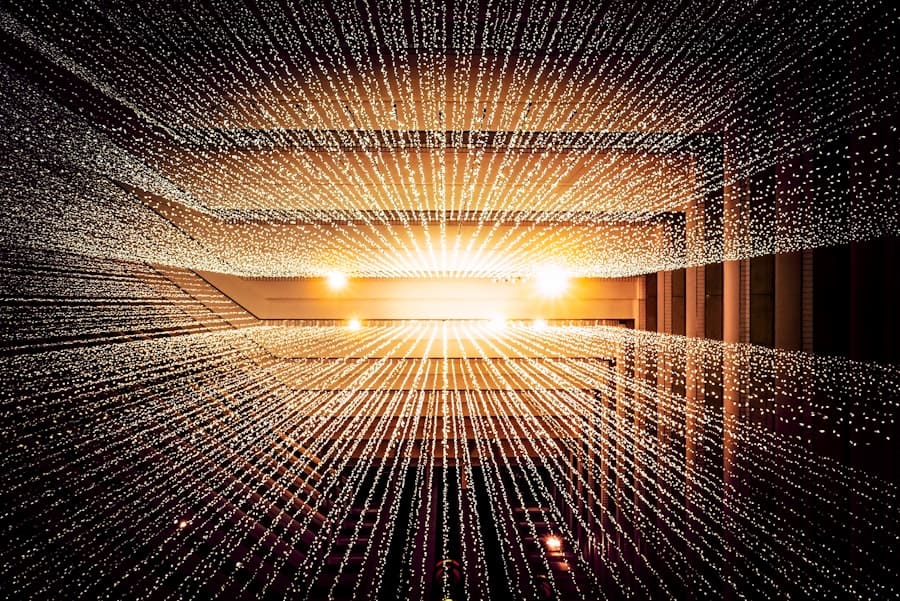Neural networks are a key component of deep learning, a branch of artificial intelligence that emulates human brain function. These networks consist of interconnected nodes, similar to neurons, that process and transmit information. Each node receives input, processes it, and sends output to the next layer, continuing until the final layer produces a result.
Deep Learning utilizes neural networks with multiple layers to analyze data and extract patterns. This multi-layered structure enables hierarchical learning, where each layer builds on the previous one to identify increasingly complex features. The ability to learn automatically from data makes neural networks highly effective for tasks like image and speech recognition, natural language processing, and reinforcement learning.
Understanding neural networks is essential for comprehending the potential and capabilities of deep learning in artificial intelligence. These systems can process complex information and recognize underlying relationships in datasets, making them powerful tools for various applications in the field of AI.
Key Takeaways
- Neural networks in deep learning are a set of algorithms designed to recognize patterns and interpret data in a way that is similar to the human brain.
- Artificial intelligence plays a crucial role in enhancing the capabilities of neural networks by enabling them to learn from data, make decisions, and improve their performance over time.
- Neural networks are powerful tools for image recognition, as they can identify and classify objects within digital images with a high degree of accuracy.
- Natural language processing in AI benefits greatly from neural networks, as they can understand and interpret human language, enabling applications such as chatbots and language translation.
- Reinforcement learning, a type of machine learning, utilizes neural networks to make sequential decisions in order to achieve a specific goal, such as playing games or controlling robots.
Exploring the Role of Artificial Intelligence in Neural Networks
The Power of Algorithms and Models
This is achieved through the use of algorithms and models that allow neural networks to adapt and improve their performance over time. One of the key aspects of AI in neural networks is its ability to enable machines to perform tasks that typically require human intelligence, such as visual perception, speech recognition, decision-making, and language translation.
Training Neural Networks
This is made possible through the training of neural networks on large datasets, which allows them to recognize patterns and make predictions based on new input. The more data these systems are trained on, the more accurate they become, leading to significant advancements in various fields.
Revolutionizing Industries
As AI continues to advance, so too does its impact on neural networks, leading to more sophisticated and capable systems that are revolutionizing industries and transforming the way we interact with technology.
Harnessing the Power of Neural Networks for Image Recognition

Neural networks have proven to be incredibly effective in image recognition tasks, thanks to their ability to learn and identify patterns within visual data. Convolutional Neural Networks (CNNs), a specific type of neural network designed for processing structured grid-like data, have been particularly successful in this domain. CNNs use a technique called convolution to filter and process visual data, allowing them to recognize features such as edges, textures, and shapes within images.
By leveraging the power of neural networks for image recognition, we have seen significant advancements in applications such as facial recognition, object detection, medical imaging analysis, and autonomous vehicles. These technologies rely on neural networks to accurately interpret and understand visual data, enabling them to make real-time decisions and predictions based on their observations. As neural networks continue to evolve and improve, we can expect even greater strides in image recognition capabilities, further expanding their potential impact across various industries.
Leveraging Neural Networks for Natural Language Processing in AI
| Neural Network Model | Accuracy | Loss | Training Time |
|---|---|---|---|
| LSTM | 85% | 0.3 | 2 hours |
| Transformer | 90% | 0.2 | 4 hours |
| BERT | 95% | 0.1 | 6 hours |
Natural language processing (NLP) is another area where neural networks have demonstrated remarkable capabilities. NLP focuses on enabling machines to understand, interpret, and generate human language in a valuable way. Recurrent Neural Networks (RNNs) and Long Short-Term Memory (LSTM) networks are commonly used in NLP tasks due to their ability to process sequential data and learn from dependencies within language.
The application of neural networks in NLP has led to significant advancements in machine translation, sentiment analysis, chatbots, and text generation. These technologies rely on neural networks to comprehend and generate human language with increasing accuracy and fluency. As a result, we are witnessing a transformation in how we interact with language-based technologies, with neural networks playing a central role in enabling more natural and intuitive communication between humans and machines.
Unleashing the Potential of Neural Networks for Reinforcement Learning
Reinforcement learning is a type of machine learning where an agent learns to make decisions by taking actions in an environment to achieve maximum cumulative reward. Neural networks have been instrumental in advancing reinforcement learning by enabling agents to learn complex strategies and behaviors through trial and error. Deep Q-Networks (DQN) and Policy Gradient methods are examples of neural network-based approaches that have been successful in reinforcement learning tasks.
The potential of neural networks for reinforcement learning is vast, with applications ranging from robotics and autonomous systems to game playing and resource management. By harnessing the power of neural networks, we can train agents to navigate dynamic environments, optimize decision-making processes, and adapt to changing circumstances in real-time. As research in this field continues to progress, we can expect neural networks to unlock new frontiers in reinforcement learning, paving the way for more autonomous and adaptive systems.
Overcoming Challenges and Limitations in Neural Networks for AI

Data Requirements
One of the primary challenges is the need for large amounts of labeled data to train these networks effectively. This can be particularly challenging in domains where labeled data is scarce or expensive to obtain.
Interpretability and Computational Complexity
Neural networks are often considered “black box” models, meaning that it can be difficult to interpret how they arrive at a particular decision or prediction. Furthermore, training deep neural networks can be computationally intensive and time-consuming, requiring significant computational resources and expertise.
Overfitting and Future Research
Additionally, overfitting – where a model performs well on training data but poorly on unseen data – is a common issue that must be addressed when training neural networks. Despite these challenges, ongoing research is focused on developing techniques to mitigate these limitations and make neural networks more robust, interpretable, and efficient for a wide range of AI applications.
The Future of Neural Networks: Advancements and Innovations in Deep Learning
The future of neural networks holds immense promise for advancements and innovations in deep learning. As research continues to push the boundaries of what is possible with these systems, we can expect to see improvements in areas such as model interpretability, transfer learning, unsupervised learning, and meta-learning. These advancements will enable neural networks to learn more efficiently from smaller datasets, generalize better to new tasks, and adapt more readily to changing environments.
Furthermore, the integration of neural networks with other AI techniques such as reinforcement learning and evolutionary algorithms will lead to more powerful and adaptive systems. This convergence of different AI approaches will enable neural networks to tackle increasingly complex problems across diverse domains, from healthcare and finance to manufacturing and transportation. As we look ahead, it is clear that the future of neural networks is bright, with continued advancements poised to revolutionize the field of deep learning and drive innovation in artificial intelligence as a whole.
If you’re interested in exploring the potential of neural networks in deep learning, you may also want to check out this article on multi-universe concepts and how they could impact the development of artificial intelligence. This article delves into the idea of multiple interconnected universes and how it relates to the advancement of technology, including the potential for neural networks to evolve in a multi-universe context.
FAQs
What is a neural network in deep learning?
A neural network in deep learning is a computational model inspired by the structure and function of the human brain. It consists of interconnected nodes, or “neurons,” that work together to process and analyze complex data to identify patterns and make decisions.
How does a neural network work in deep learning?
In a neural network, data is input into the network and processed through multiple layers of interconnected neurons. Each neuron applies a mathematical operation to the input data and passes the result to the next layer. Through a process of training and optimization, the network learns to recognize patterns and make predictions based on the input data.
What are the different types of neural networks in deep learning?
There are several types of neural networks used in deep learning, including feedforward neural networks, convolutional neural networks (CNNs), recurrent neural networks (RNNs), and more specialized architectures such as autoencoders and generative adversarial networks (GANs). Each type of network is designed to handle specific types of data and tasks.
What are the applications of neural networks in deep learning?
Neural networks in deep learning are used in a wide range of applications, including image and speech recognition, natural language processing, recommendation systems, autonomous vehicles, medical diagnosis, and financial forecasting. They are also used in areas such as robotics, gaming, and creative arts.
What are the advantages of using neural networks in deep learning?
Neural networks in deep learning have the ability to learn from large amounts of data and identify complex patterns that may be difficult for traditional algorithms to detect. They can also adapt to new data and make accurate predictions in real-time, making them well-suited for tasks that require advanced pattern recognition and decision-making.











Leave a Reply